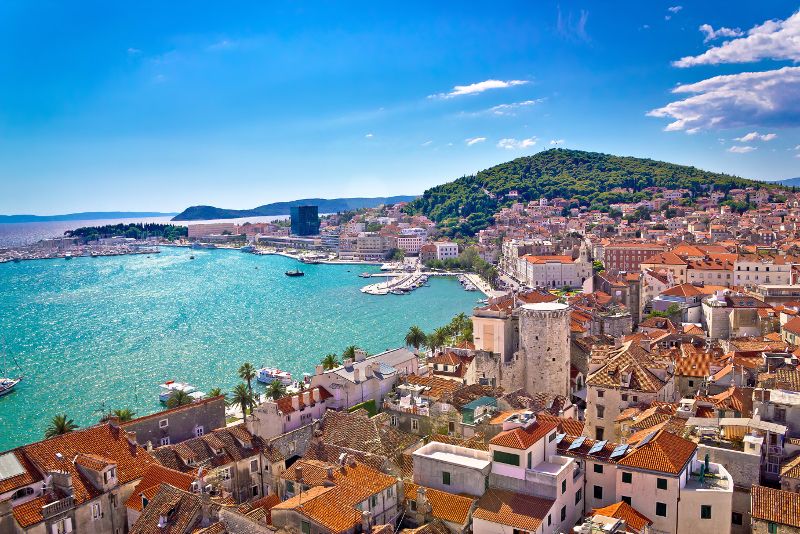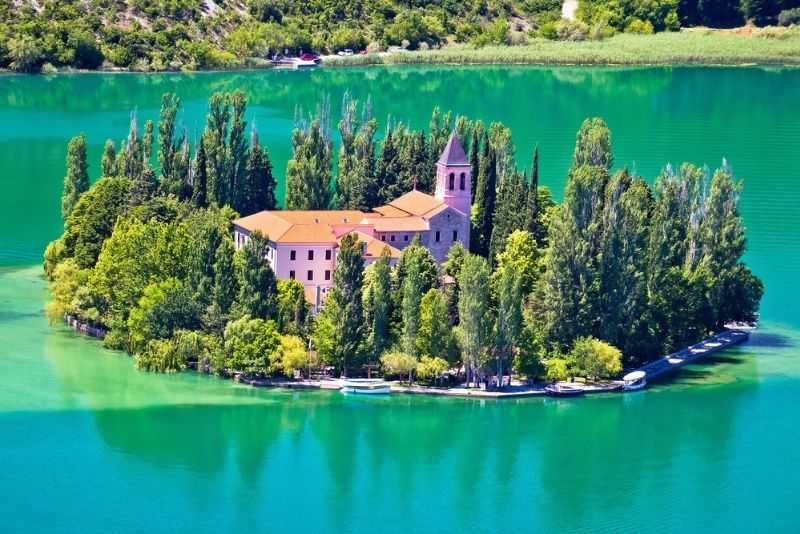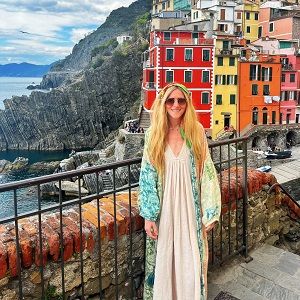Krka: Day Trips and Tours from Dubrovnik
Do go chasing waterfalls inside Krka National Park, one of Croatia’s most famed and beautiful national parks.
The park is positioned next to the Krka river which starts at the foothills of the Dinara mountains. It’s filled with lush landscapes, lakes, cascading waterfalls and an abundance of wildlife to spot, such as birds and otters to name a few.
Do go chasing waterfalls inside Krka National Park, one of Croatia’s most famed and beautiful national parks.
The park is positioned next to the Krka river which starts at the foothills of the Dinara mountains. It’s filled with lush landscapes, lakes, cascading waterfalls and an abundance of wildlife to spot, such as birds and otters to name a few.

(0/24) checking Musement...
Do go chasing waterfalls inside Krka National Park, one of Croatia’s most famed and beautiful national parks.
The park is positioned next to the Krka river which starts at the foothills of the Dinara mountains. It’s filled with lush landscapes, lakes, cascading waterfalls and an abundance of wildlife to spot, such as birds and otters to name a few.
On a day tour to Krka from Dubrovnik, nothing beats a dip in the 22.5 meter high Roški Slap waterfall under the warm Croatian summer sun — as well as wandering trails and roads that date back to Roman times.
Discover traditional villages, ancient monasteries, caves and hiking trails with a day tour to Krka from Dubrovnik.

How to get to Krka from Dubrovnik?
Krka National Park is a three to four hour drive from Dubrovnik, located in the southern part of Croatia. While Dubrovnik is on the Dalmatian coastline, Krka is found inland of Dalmatia.
The closest town to Krka is Šibenik (near Skradin) located 20 kilometers from the national park. There are five ways to enter Krka National Park, but most tours prefer Skradin and Lozovac entrances.
From Dubrovnik to Krka by bus/public transport
There’s no direct bus from Dubrovnik to Lozovac, but there’s a bus that runs twice a day to Skradin. The journey is four to five hours long.
You will arrive at a bus stop in Skradin, 150 meters from Krka’s ticket and information office. From there, you can catch a 25-minute boat ride along the Krka River to the lower part of the park to visit the Skradinski Buk waterfall.
If you want to go to the Lozovac entrance from the Skradin office, you can take a taxi ride straight to the park. You can also take a regional bus that runs from Skradin to Šibenik (19 kilometers away). The drive from Šibenik to Lozovac is 18 minutes long.
From Dubrovnik to Krka by car
You can travel directly from Dubrovnik to the park entrance in Skradin or Lozovac in a private car. Travel three to four hours from Dubrovnik along the D8 road or the highway until you reach the ticket office in Skradin.
Catch a boat ferry from the Skradin entrance. To enter through the Lozovac entrance, drive directly from Dubrovnik to Krka and enter here. You will drive through tolls along the way.
From Dubrovnik to Krka by plane
You can take a chartered flight from Dubrovnik to Krka, however, it’s not a direct route. Catch a flight from Dubrovnik to Split. Once you’re in Split, you can take a bus to Skradin and either enter by boat, or travel to Lozovac to enter via vehicle.
Guided tour to Krka from Dubrovnik
Forget worrying about all the logistics. A direct guided tour to Krka from Dubrovnik includes all pickups, drop-offs and transfers in a private air-conditioned vehicle.
Some day trips include only transfers to and from Krka National Park, while others include transfers to and around the park once you’re inside.
How much does the entrance ticket to Krka cost?
Open seven days a week, there are different entrances to Krka National Park. Tickets vary in price depending on your point of entry. You can purchase a full entrance ticket (including all attractions), or separate entrance tickets to certain attractions.
Lozovac entrance fee via bus:
- HRK105 (US$14.63) for adults
- HRK85 (US$11.84) for kids (7-18 years old) and students
- FREE: Children under 7 years old
Skradin entrance fee via bus:
- HRK110 (US$15.32) for adults
- HRK90 (US$12.57) for kids (7-18 years old) and students
- FREE: Children under 7 years old
Entrance fee to Roski Slap waterfall only (via foot):
- HRK50 (US$6.99) for adults
- HRK40 (US$5.59) for kids (7-18 years old) and students
- FREE: Children under 7 years old
Entrance fee to Kistanje, Krka Monastery, Burnum and Puljane only (via foot):
- HRK40 (US$5.59) for adults
- HRK30 (US$4.19) for kids (7-18 years old) and students
- FREE: Children under 7 years old

What is the typical itinerary of a day tour to Krka from Dubrovnik?
Starting your day trip to Krka, a private air-conditioned vehicle collects you from your accommodation in Dubrovnik. Take in the landscapes and local scenes, driving three to four hours until you reach Krka National Park.
Entering the famous park along the Krka river, your national park tour begins. Attractions have different entryways, for example, some can only be accessed by boat or foot, while other sites are reachable via car.
Catch a boat and cool off at the multilevel Skradinski Buk waterfall with a dip and a photo op. Roški Slap, Krka’s second most-visited waterfall in the national park, is accessible by both vehicles and boats.
Visit the historical Krka monastery in Kistanje village and boat trip to tiny Visovac Island in the middle of a lake, wandering the Franciscan Monastery (Visovac Monastery). Tours differ in which attractions are visited first and last.
Pass by picturesque villages like Skradin and enjoy the lush scenes of mother nature along the way. After a day inside the national park, head back from Krka to Dubrovnik and your transport guide drops you back at your hotel.
Some tours include additional stop-offs on the journey home like dinner at a local restaurant in medieval Ston town or a visit to Bacina Lakes for lunch. Some tours only include transfers to and from the park and are unguided.
What kinds of tours are available to go to Krka?
Guided day trip to Krka from Dubrovnik
Leave Dubrovnik to Krka National Park between 7 AM and 7:30 AM in a private vehicle that collects you from your hotel. Some tours have a designated meeting point, but pickups can be arranged if not already included.
After a 3.5-hour journey, arrive at the national park and spend three to four hours visiting its famous cultural, historical and natural sites inside. Some top attractions include Visovac island, Krka Monastery and the postcard-worthy Skradinski Buk waterfall.
On the way back to Dubrovnik from your Krka excursion, tours offer alternative last stops either for a meal or a town visit. A day trip to Krka from Dubrovnik includes tickets for all entrances and transport.
Shuttle transfer without guide to Krka from Dubrovnik
If you prefer traveling on your own with no time constraints in between sightseeing, you can opt for a shuttle transfer trip to and from Krka National Park. A private vehicle will transport you to the park and, after a few hours, transfer you back to Dubrovnik from Krka.
For these types of day trips to Krka National Park, you choose and specify what time you’d like to depart from Dubrovnik. For groups of four, a private car will transport you and, for groups of up to eight people, travel by minivan.
These day trips do not include entrance tickets, transfers or tickets to any attractions inside Krka.
Day trip to Krka plus Split from Dubrovnik
A day trip to Krka and Split from Dubrovnik is the longest tour, and get to see two famous places in the Dalmatia region in one day. Leave Dubrovnik for Krka National Park at 7 AM in a private vehicle.
Spend three hours at the park visiting the awe-inspiring Skradinski Buk waterfall, passing by ancient worship grounds and traditional Croatian villages.

Next, head to the country’s second-largest city, Split, to check out eight historical city attractions. Visit Diocletian's Palace which was built for a Roman Emperor and explore its different areas and grounds, for example, the Golden Gate and Diocletian's Cellars.
Stop by the Riva Harbor too and take in the local scenes on the city’s waterfront. From Split, travel back to Dubrovnik, the 12 to 15 hour tour ending where it started.
How much does a tour to Krka from Dubrovnik cost?
A transfer trip to and from Krka National Park from Dubrovnik costs HRK451 (US$63) to HRK1,204 (US$167) per person. Some private transfers offer flexible starting times.
The price for a full-day trip from Dubrovnik to Krka is from HRK2,649 (US$370) to HRK6,539 (US$913) per person. Tours offer different packages in terms of what you will see and do en route to the national park, as well as on your journey back to Dubrovnik.
For example, certain day tours drive along the Adriatic coast to Ploče on the way to the national park. The priciest tour stops at Bacina Lakes for lunch and countryside scenes after the Krka visit.
The more affordable day trips to Krka National Park offer bigger group sizes of up to 10 people. The more expensive options include small group tours from two to four people or a maximum of eight guests only.
What will you see and do in Krka?
The Visovac house "Kuželj"
Surrounded by the forestry of Oriental Hornbeam and Downy Oak trees, this visitor center has an open-air library for an educational experience. Discover the permanent exhibition inside the house titled "The Forester's House" and a playground located around here, taking inspiration from nature and animals.

Oziđana pećina
Witness a piece of history inside this ancient cave that dates back to the middle of the Bronze Age! There is evidence of human existence inside the cave from a time between 5000 to 1500 B.C.
Manojlovac slap waterfall
At a whopping nearly 60 meters high, this is Krka’s tallest waterfall. There is a walking trail with a viewpoint for visitors wishing to take in the majestic scene. The fall is found just upstream from Skradinski Buk waterfall.
Bilušića Buk waterfall
This waterfall is the first fall along the river out of the park’s seven waterfalls and is easily accessible via the road between Kistanje and Knin.
Burnum
Ever visited a Roman military camp before? Walk around a historical piece of the past at the only Roman-military amphitheater in Croatia. It was built and utilized during the rule of the Roman army under the Legio XI Claudia (led by Julius Ceasar) and Legio IV Flavia Felix. An archaeological collection at Eco Campus Krka is located here.
Walking trails
The park has three walking trails that circle around three major attractions. These are Skradinski Buk (1.9 kilometers) Roški Slap (1.3 kilometers) and Krka Monastery (2.1 kilometers). There are short trails, for example, the walk to Bilušića Buk is only 300 meters. The park’s longest trek is 8.5 kilometers. Many trails lead to viewpoints.
When is Krka open over the year?
The Krka National Park is open all year round, but some attractions are closed in certain months. Kistanje Monastery (Krka Monastery) is closed from November to March.
The archaeological collection at Eco Campus Krka is open until Oct. 31. From Nov 1, you will need to make an appointment to visit the collection. The Krka National Park is closed from Dec 25 to Dec. 26. Only the Lozovac entrance is open on Jan. 1.
What are the opening times?
Skradinski Buk Waterfall
- 9 AM to 4 PM (January, February, November and December)
- 9 AM to 5 PM (March and Oct. 16 - 31)
- 8 AM to 6 PM (April and Oct. 1-15)
- 8 AM to 7 PM (May and September)
- 8 AM to 8 PM (June, July and August)
Roški slap and Stinice
- 9 AM to 4 PM (January, February, November and December)
- 9 AM to 5 PM (March and Oct. 16 - 31)
- 10 AM to 6 PM (April, May and Oct.1-15)
- 10 AM to 8:30 PM (June and September)
- 8 AM to 8 PM (July and August)
The Kistanje Monastery is open from 10 AM to 6:30 PM. The archaeological collection at Eco Campus Krka is open from 10 AM to 6 PM. On December 24 and December 31, the park is open until 12 PM.
When is the best time to visit Krka?
Each season shows off a different side of Krka National Park, with frozen falls in winter and floral blooms in spring. As most travelers flock to Croatia in summer, the summer period is busiest at the park, and attractions like the waterfalls are very crowded.
With fewer crowds and great weather, May, June, September and October are perfect times to visit Krka National Park.
Are there any tours to Krka from other cities in Croatia?
Yes, there are other tours departing from several other cities in Croatia:
- Day trips to Krka National Park from Split
- Krka National Park day tours from Zadar
- Day tours to Krka National Park from Trogir
- Krka National Park day trips from Zagreb
Travel tips
- Wear comfortable walking shoes and clothing.
- Pack a strong sunblock, sun hat and sunglasses.
- If you plan on swimming at the waterfalls, bring swimming gear and a towel.
- Bring extra drinking water and snacks.
- Don’t forget to pack a charged camera.
- Plan your day trip in advance as tours depart early in the morning.
- During popular seasons, if traveling privately and not on a tour, make sure to book your boat tickets in advance.
- Children need to be accompanied by an adult for the tour.
